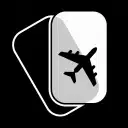Safety First – Airline Regulations Over Time
Since that fateful day, December 17th 1903, when Wilbur and Orville Wright first took to the skies in Kitty Hawk, North Carolina, powered flight has been both a blessing for consumers and a constant concern for lawmakers. Within one century, powered flight went from a somewhat fanciful idea to a strictly military disciple to a multi-billion dollar industry with millions of people taking to the skies every year. With such a far reach, it became important that airlines were well-regulated. Without such regulations, it would be possible for airlines to take advantage of the flying public, or, far worse, put them in danger. Airline regulations today are vast and complicated, but how did we get here?
Air Mail
While it can be difficult to imagine today, air travel was a rather slow discipline to catch on. Innovations in air travel were slow, tedious, and expensive. Commercial air travel was slower still, as air travel was not seen as something that was worth the expense. Further, given the start of World War I, all innovations in air travel were geared toward the military. Domestic, non-military air travel did not truly begin taking leaps until the government invested in air mail. Shipping the mail by air meant greatly reduced shipping times, guaranteeing swifter commerce and communication, advancements from which the government could greatly benefit. Seeing this benefit, the government invested $100,000 to advance air mail. This eventually led the Contract Air Mail Act of 1925. This unprecedented piece of legislation gave much of the responsibility and cost of shipping air mail to private companies. With free enterprise came innovation, and after this act, commercial airlines began making some rapid advancements.
The Watres Act and Air Mail Act of 1934
By 1930 it became apparent that the idea to allow the private sector to handle air mail had been a good one, and the government sought to further this relationship. In order to do this, Congress approved the Watres Act. The Watres Act was instrumental in allowing the government to create longer term contracts with private businesses to control air mail. These longer term contracts were extremely lucrative to the participating airlines and brought forth an age of larger and more powerful airlines, which would eventually lead to the sizes of airlines we see today. As a result of the Watres Act, governmental contracts became extremely important to airlines. With that importance came some corruption, with many smaller airlines claiming larger airlines had an unfair advantage when it came to getting these contracts. To ensure greater equality, the government created the Air Mail Act of 1934, which ensured a more even distribution of government contracts. With this, contracts were not necessarily something a company could build itself upon, and so they had to focus on the passenger side of air travel.
Plane Advancements
Over the next several decades, several advancements were made to actual airliners to allow for the coming explosion of the industry. Advancements were no longer only about reliability and safety, but almost equally important was customer comfort. Boeing built cabins that were insulated from the noise of the engines, making travel a more enjoyable experience. Jet planes came to be able to carry an amount of customers that made passenger travel a profitable endeavor. With the invention of pressurized cabins, the airline industry was finally at a point where they could carry enough passengers to make a profit, and enough passengers wanted to fly. Demand and supply had come to some sort of balance, and come the 1950s, the airline industry finally reached a tipping point and started to resemble what we see today.
The Modern Airline Industry
After the end of World War II, the airline industry became what would be considered “modern.” Average people could fly, and the skies became more crowded. So crowded, in fact, that in 1956, over the Grand Canyon, two jet planes collided in mid-air, prompting the government to make new regulations to ensure the safety of the flying public. Congress passed the Federal Aviation Act of 1958, which created the federal body that would come to be known as the Federal Aviation Administration. The FAA was charged with creating, maintaining, and advancing the air traffic control system. With this advancement in passenger safety, people could have faith that flying was a viable, safe means of travel, paving the way for the airline and private jet industry as we know it today.
- >Airline Deregulation Act of 1978
- The Air Commerce Act of 1926
- The Kelly Act
- The Effects of Airline Regulation
- Airline Regulations: A Historical Perspective
- The Civil Aeronautics Act of 1938
- Civil Aeronautics Board
- The Federal Aviation Act of 1958
- The Federal Department of Transportation
- Essential Guide to Airport Regulations
- Airline Deregulations
- Flyrights: A Consumer Guide to Air Travel
- Obligations of Airlines and Rights of Passengers
Are you ready to book your Salt Lake City and Las Vegas charter flight yet?
Our friendly, expert air charter agents are here to answer questions or start your quote today. Don`t wait, call now and we'll get you on your way to your destination!
Call 888-593-9066










